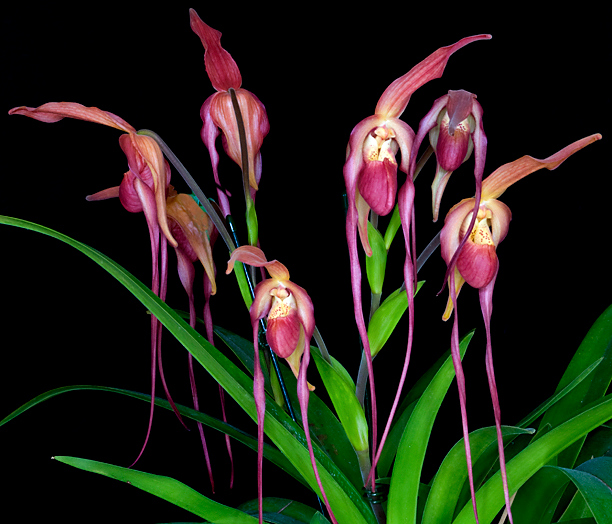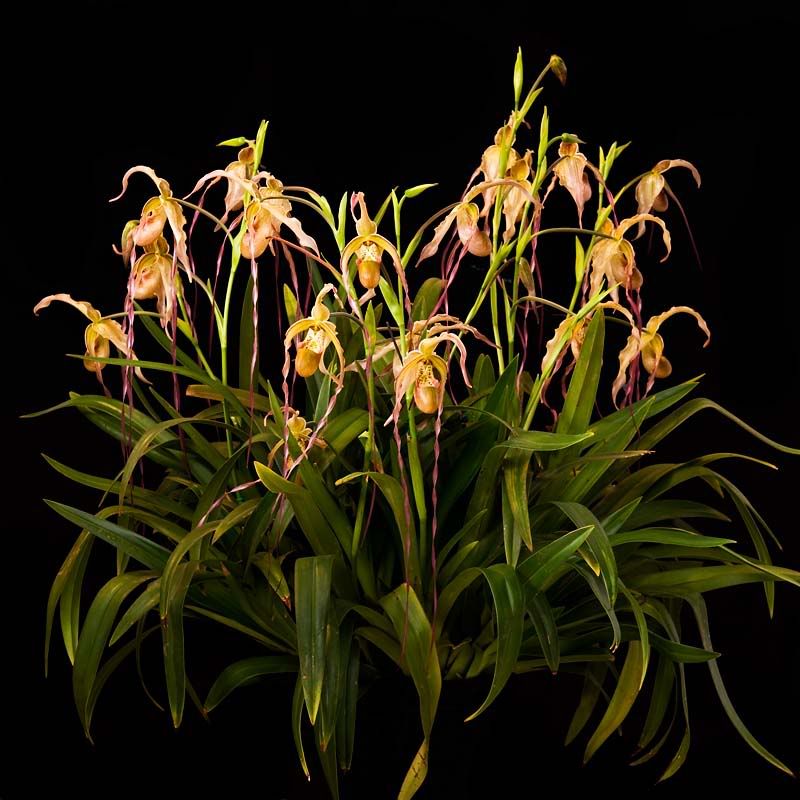D
daniella3d
Guest
Hi, I am relatively new to paph, as I have a Sanderianum and 2 Philippinense for about 6 months and they are doing well, although far from flowering size.
And I am really new to phrag and I just received 3 new plants today, a Paph Michael Koopowitz (medium seedling), one Phrag Betheva (medium seedling) and one Phrag Ashley Wilkes (large seedling).
The Ashley Wilkes is in a cup size plastic sort of pot, actually it's a plain plastic cup, with bark and the pot has holes about one inch an half up the bottom, so it's in semi-hydro. The Betheva is in bark and it's in a regular 4" square plastic pot, not semi-hydro.
I definitely don't want to leave the Ashley Wilkes in this ugly pink plastic cup, so...my question is should I repot both in bark in semi-hydro? or keep the Betheva in regular culture? Should I put them both in regular pots and leave water in the tray instead? Leave them in bark? I have a brand new bag of rockwool, should I use that mixed with the bark or just alone?
I already repoted the Paph in a 3" clear plastic pots with ventilation on the side and the roots are great, enough new growth, but I have not yet seen the roots for the others, so this is another reason why I wish to repot them. They were both repoted about a year ago as it is written on the label.
And I am really new to phrag and I just received 3 new plants today, a Paph Michael Koopowitz (medium seedling), one Phrag Betheva (medium seedling) and one Phrag Ashley Wilkes (large seedling).
The Ashley Wilkes is in a cup size plastic sort of pot, actually it's a plain plastic cup, with bark and the pot has holes about one inch an half up the bottom, so it's in semi-hydro. The Betheva is in bark and it's in a regular 4" square plastic pot, not semi-hydro.
I definitely don't want to leave the Ashley Wilkes in this ugly pink plastic cup, so...my question is should I repot both in bark in semi-hydro? or keep the Betheva in regular culture? Should I put them both in regular pots and leave water in the tray instead? Leave them in bark? I have a brand new bag of rockwool, should I use that mixed with the bark or just alone?
I already repoted the Paph in a 3" clear plastic pots with ventilation on the side and the roots are great, enough new growth, but I have not yet seen the roots for the others, so this is another reason why I wish to repot them. They were both repoted about a year ago as it is written on the label.





